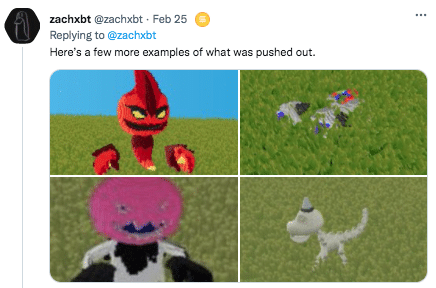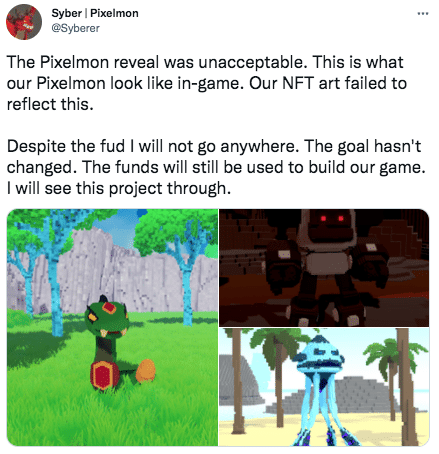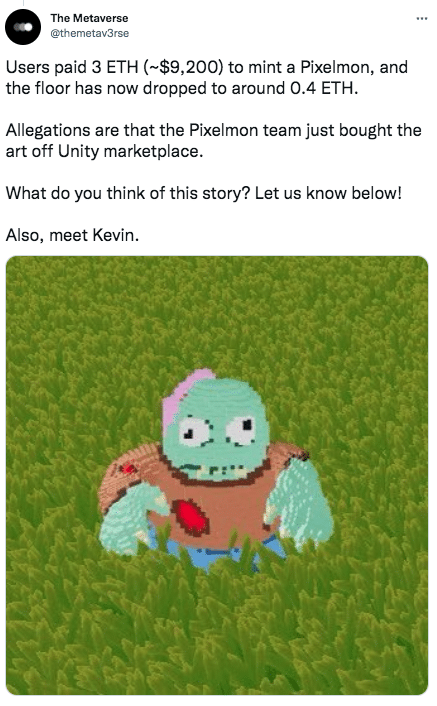March 2, 2022 / Unchained Daily / Laura Shin
Daily Bits ✍️✍️✍️
-
Bitcoin had its biggest gain in a year on Monday.
-
The US Treasury’s Office of Foreign Assets Control is setto release new rules to help enforce existing sanctions against Russia regarding financial transactions, including those with digital assets.
-
Bitcoin is trading at a 6% premium with the Ukrainian hryvnia on WhiteBIT, the most popular crypto exchange in Russia.
-
Bitcoin miners brought in $1.06 billion in revenue during February.
-
Ruble trading pairs on crypto exchanges have more than tripled in daily volume since Russia’s invasion of Ukraine began.
-
$14 million of the $26 million in crypto donated to Ukraine has already been disbursed.
-
Polkadot founder Gavin Wood donated $5.8 million in DOT to Ukraine.
-
Solidex, a DEX that recently launched on Fantom, alreadyhas $2 billion+ in total value locked on its platform.
- Uniswap set up a frontend for anyone wanting to donate ERC-20 tokens to Ukraine.
Today in Crypto Adoption…
-
Chicago Mercantile Exchange announced plans to launch micro bitcoin and ether options in March.
- Kenneth Griffin, founder and CEO of Citadel Securities, said that it is “fair to assume” Citadel will be market-making in cryptocurrencies in the coming months.
The $$$ Corner…
-
Electric Capital announced a $1 billion raise to fund crypto networks, web3 protocols, and blockchain businesses.
- VALR, a South African crypto exchange, raised $50 million in a Series B funding round.
What Do You Meme?
What’s Poppin’?
Yes, This NFT Is Worth More Than 3 Jet Skis
Pixelmon, a metaverse gaming project, dropped a hotly anticipated NFT collection on Friday, February 25th. At 3 ETH per mint, the game raised more than $70 million for its art.
The NFTs, which grant holders exclusive access to Pixelmon-based land and token airdrops, boosted in-game earning potential, access to the alpha release, among other things, were immediately blasted on Twitter over the atrocious art quality.
Even the creator of Pixelmons, who goes by the name Syber, agreed that the art was disappointing:
As shown above, Syber noted that the NFTs did not necessarily reflect how the characters would look in the game due to issues with OpenSea. “OpenSea has limitations to their 3D compatibility so we had to continuously downscale this (in 3D) to fit what they could handle. And so, some look a shitty game from the 90s right now and do not reflect what they look like in game.”
In a later tweet, Syber added that the NFTs could be updated, and Pixelmon would make them look “better.”
However, as is often the case in crypto, failure turns to memes, and memes turn to riches. While the floor price for Pixelmon NFTs is currently sitting under .5 ETH (or 1/6th the initial mint price), the floor price for “Kevin” Pixelmon NFTs is presently above 6 ETH due to its, well, ugliness.
Shockingly, the above NFT appears to be an upgraded version of Kevin. During the initial hours post-mint, this is what Kevin looked like:
At current ETH prices, the cheapest Kevin NFT, of which there are 107, is worth roughly ~$18,000.
While that might seem shocking, John Bisu, cofounder of szns.io, a fractional NFT marketplace, seemed to think it a worthy investment and purchased Pixelmon #2304, a Kevin with uncommon rarity, for 8.6 ETH yesterday afternoon. Bisu told Unchained that he might donate his Kevin into the “Trash Pile” on TrashDAO, where users can swap NFTs from qualified contracts in exchange for $TRASH tokens, which govern the deposited NFTs. However, if Kevin continues to grow in value, Bisu might fractionalize the NFT on szns, so that everyone can have a piece of memetic history because, as Bisu explained to Unchained, “There is a kevin in all of us.”
Recommended Reads
-
Blockchain Association’s Jake Chervinsky on Russia x crypto:
-
Variant Fund’s Li Jin on the future of NFT marketplaces:
-
Travis Kling on the most important crypto headlines of Feb. 2022:
On The Pod…
Is Code Law? Should the Hacker Be Punished? The DAO Creators Disagree
During my research for The Cryptopians, I found information that I believe identifies the perpetrator behind The DAO hack on Ethereum. Three founding members of The DAO and Slock.it (Christoph Jentzsch, Lefteris Karapetsas, Griff Green) discuss how and why they created The DAO, how they helped save the funds being siphoned off by black hat hackers, their personal feelings about The DAO, along with their reaction to the news about who I believe was The DAO attacker. Show topics:
Part 1: Background on The DAO
-
Christoph, Lefteris, and Griff’s background and how they came to Slock.it
-
what Slock.it was and why the Slock.it team decided to create The DAO
-
what The DAO has to do with venture capital funding
-
why the Slock.it team did not cap The DAO sale
-
what made The DAO such a popular investment vehicle
-
why The DAO developers were scared at the amount of money they raised
Part 2:
-
what Christoph, Lefteris, and Griff’s initial reaction to The DAO was
-
saving funds from The DAO via a hard fork versus white hat hacking
-
whether they thought Ethereum Classic would survive a hard fork
-
how the Ethereum community has treated Christoph, Griff, and Lefteris in the wake of The DAO attack
Part 3:
-
why they disagree on whether code is law
-
their reaction to my naming Toby Hoenisch as The DAO attacker
-
which actor would play them in a movie about The DAO attack
Book Update
My book, The Cryptopians: Idealism, Greed, Lies, and the Making of the First Big Cryptocurrency Craze, which is all about Ethereum and the 2017 ICO mania, is now available!
You can purchase it here: http://bit.ly/cryptopians









